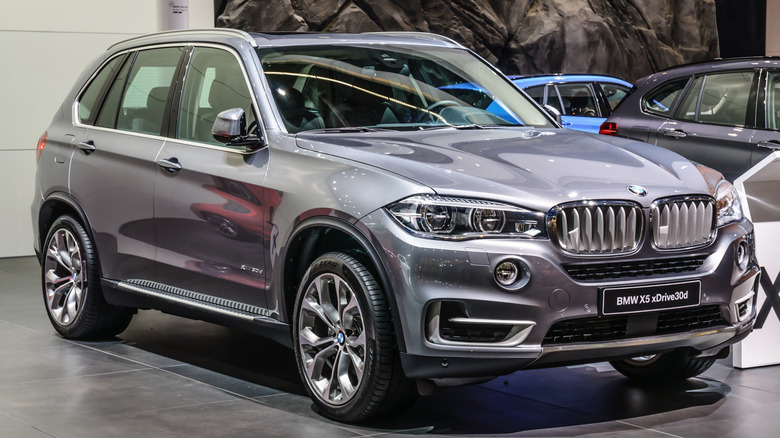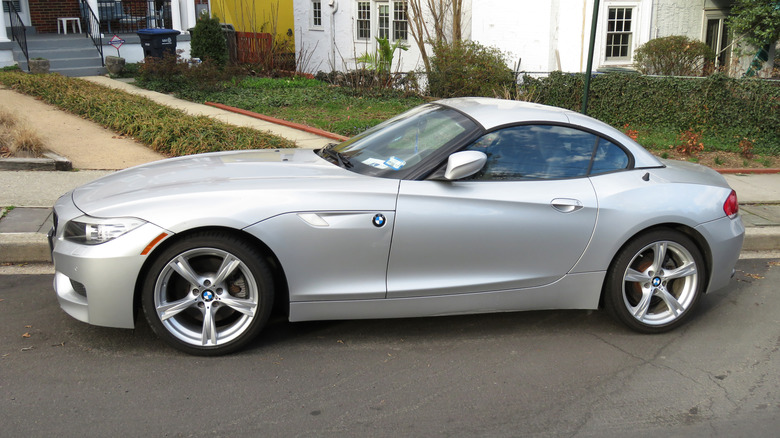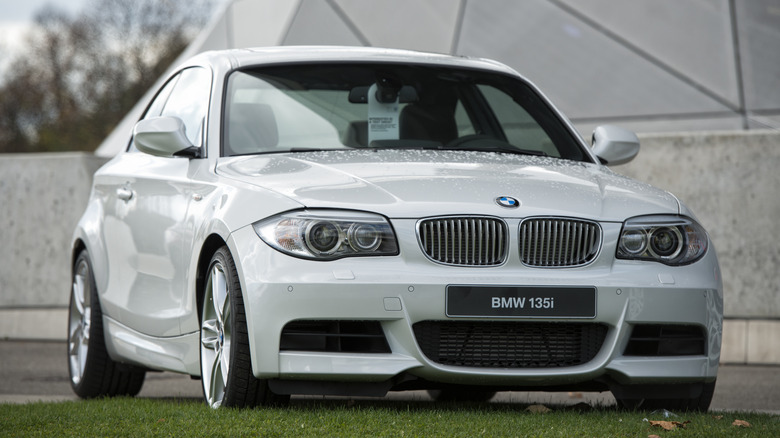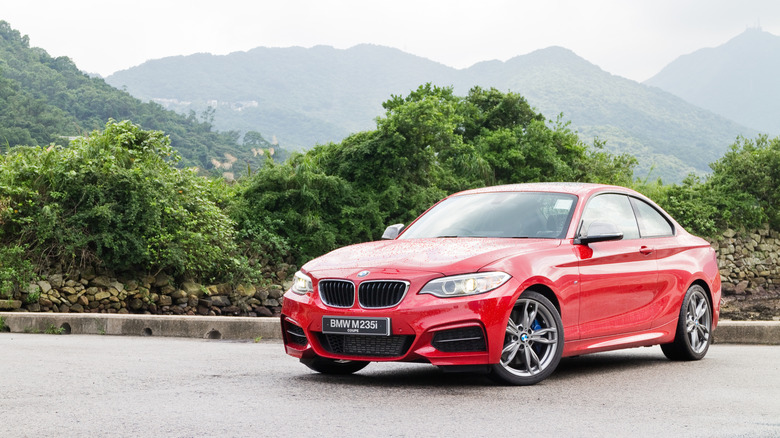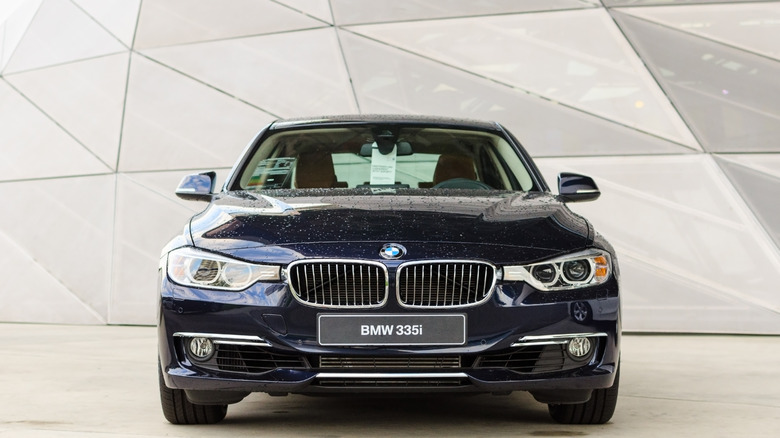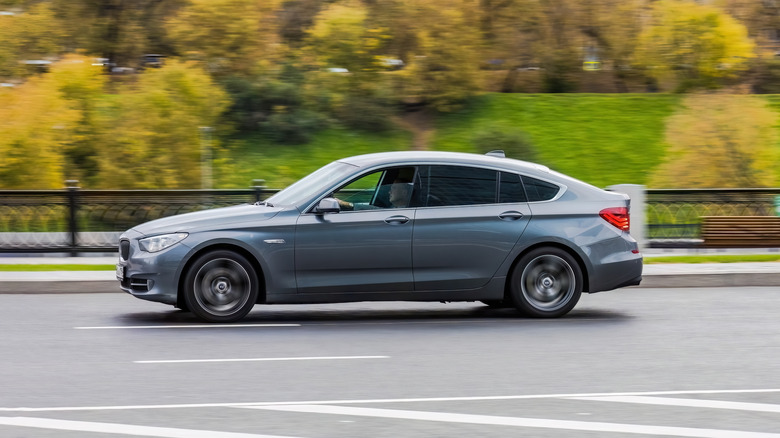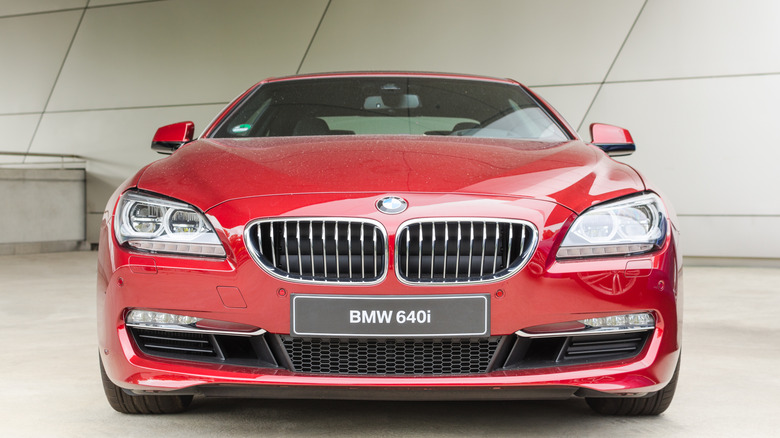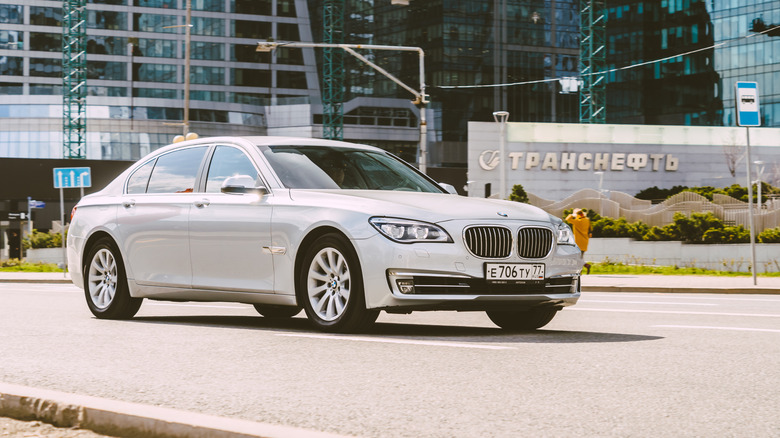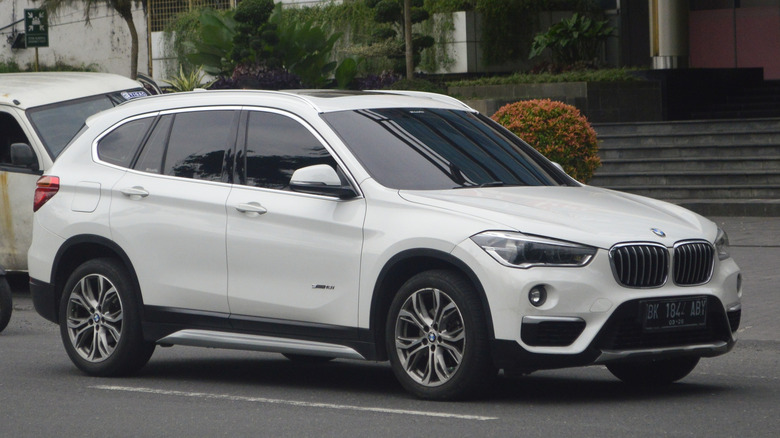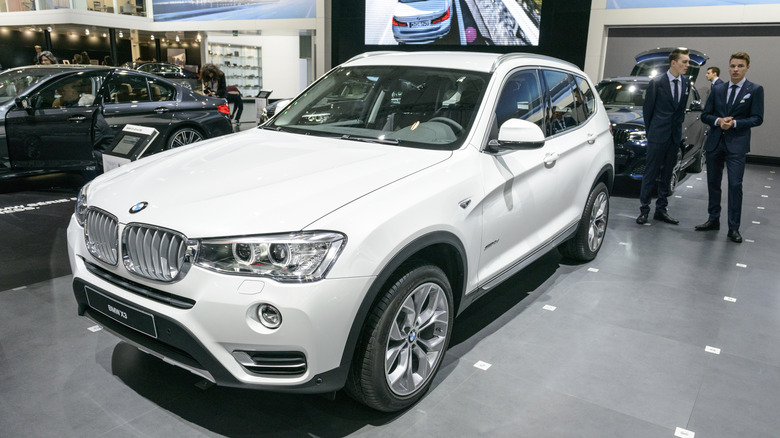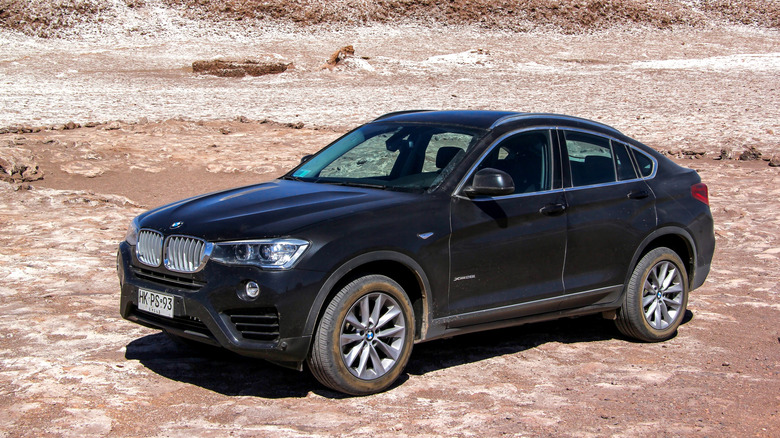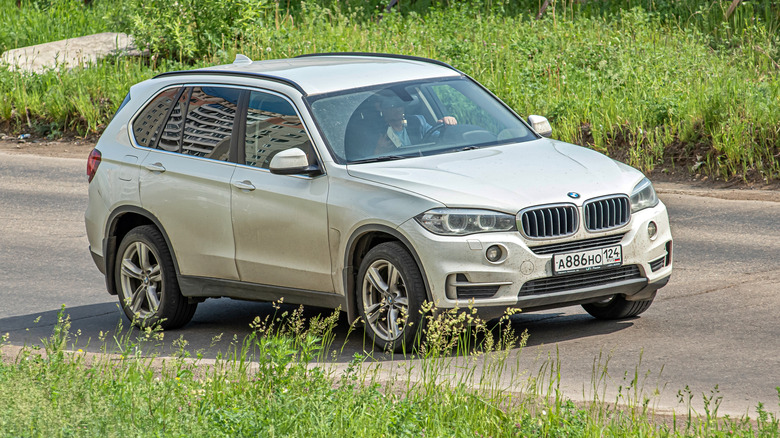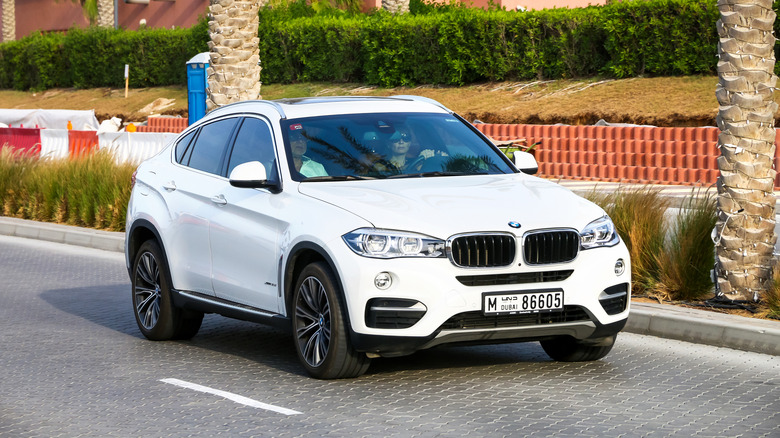13 BMWs Powered By The N55 Engine
The BMW N55 family of engines were released for the 2009 model year, coming in to replace the ageing and troublesome N54 series. At the time, where the competition was busy chasing the highest horsepower, or the most efficient engine, BMW engineers decided that they'd like a slice of both pies, and created this: the N55 platform. It was a game changer — a three-liter inline-six unit, paired with a single-scroll turbo. Before long, the powerplant became the beating heart of the most iconic BMW models ever made.
The 300 to 350 horsepower that the N55 made (stock) would have made your regular white-collar buyer plenty satisfied, but what made enthusiasts truly excited wasn't just the factory output; it was the engine's incredible potential for modification. Independent tuners discovered they could extract significantly more power with relative ease, though on this list, we'll focus strictly on what BMW delivered from the factory. However, the N55 was not a perfect engine (far from it, suffering from several problems) so buyers are advised to go through with due diligence if planning to buy one. With that in mind, here are the BMWs that were fortunate enough to receive this exceptional powerplant:
2009-2016 E89 – Z4 sDrive35i
The first is the second-generation BMW Z4, which happens to be one of the most affordable BMWs available with a manual transmission today. Specifically, it's the E89 in the sDrive35i spec produced between 2009 and 2016 that came with the N55 engine, making 340 horsepower and 332 lb-ft of torque. Given that this generation of Z4 only weighed about 3,450 pounds, it's fair to say that it has plenty of power, and this is evidenced by its standing to 60 mph time of 5.1 seconds. Seating, of course, was for two people, with a comically large hood and a disproportionately sized boot.
This made it seem quite ugly initially even for BMW fans, but the design eventually grew on people, and today, it is considered one of the best BMWs ever designed. The history of the BMW Z-series cars harks back to the 1980s, when BMW decided to reintroduce models that were inspired by the legendary BMW 507 series roadster of the glory days. The "Z" in this model line stands for "Zukunft", which is the German word for future. Initially coming in with a base MSRP of $52,475 (2009 with the N55 engine), today, these magnificent vehicles can be found for around $15,000 for an example that isn't a lemon. BMW would soon discontinue hardtop convertibles altogether, but with 115,000 cars of the second-gen Z4 produced, the supply won't run out anytime soon.
2010-2013 E88 Convertible – 135i
Here's an entrant from the 1-series lineup — specifically, the 135i that was produced from 2010 to 2013. The car was offered in two main body styles, being the coupe (E82) and convertible (E88), respectively. The N55 engine was introduced on the 135i in 2010, coming into production units for the 2011 model year, where it produced 300 horsepower and 300 lb-ft of torque. Mated to a seven-speed dual-clutch transmission, the 135i had a standing to 60 mph time of 5.0 seconds, a quarter-mile time of 13 seconds, and a respectable top speed of 155 mph.
It was a premium car (we can't really call BMW's entry-level car a "luxury" vehicle), but it did have a nice feature suite, with dual-zone climate control at the front, cruise control, Bluetooth audio, leather trimmed interior, and a sunroof as standard. When new, a 2011 135i would cost $36,350 for the xDrive35i trim (which was the trim that came with the N55 engine); however, used prices today range from $10,000 to $12,000 for a unit in good condition.
2013-2016 F22/F23 – M235i
Possibly the most famous car on this list, the M235i also came with the N55 engine, particularly with a variant known as the N55B30O0. This version of the N55 produced a not-insignificant 322 horsepower and 332 lb-ft of torque, and is what enabled the 2013 M235i to clock a standing to 60 mph time of just 4.4 seconds. The M-version is simply a souped-up version of the regular 2-series BMWs of the time, though the upgrade to the M-spec does give the existing 235i a whole new character. Being a performance-oriented car, it came with all the bells, whistles, and features that one would expect on an M-class machine, including M-sport brakes, M-adaptive suspension, and standard launch control.
Safety was well-looked after as well, with systems such as all-wheel independent suspension, an after-collision safety suite, auto-emergency braking, and an engine immobilizer being included as standard on the model. Furthermore, while the car came with an eight-speed automatic in most dealerships, a six-speed manual variant was also an option for enthusiast buyers. When new, a 2013 M235i would cost buyers a base MSRP of $43,100, though many examples can be found today in the $14,000 to $18,000 range with acceptable mileage and condition.
2010-2013 E90 though E93 – 335i
Next up is the BMW 335i, which had chassis codes starting with E9. However, we want to specifically include the BMW 335i made between 2010 and 2013, which was available in sedan (E90), coupe (E92), convertible (E93), and touring/wagon (E91) configurations. Additionally, the production of the four-door 335i (E90) was phased out after 2011, being replaced with the newer F30 platform in 2012. Note that while the 335i was produced from 2010, only units from 2011 onwards came with the N55 engine.
Even then, some BMW 335is models retained the N54 engine well into the 2011 model year, so do your research if planning to buy one. In models equipped with the N55, the engine produced 302 horsepower and 295 lb-ft of torque, and rocketed the car from zero to 60 in 5.1 seconds. When new, an entry-level 2011 BMW 335i model would run you about $41,975, including a destination charge of $875, with the addition of xDrive being a $2,000 premium. However, they are on sale today for between $8,500 and $12,500 for examples in decent condition. If you're looking to buy, look for a unit that has no or minimal modifications made to it, though this is a lot easier said than done.
2014-2016 F32/F33/F36 – 435i
The BMW 435i provided a fantastic value, especially around the time it was launched, because it looked good, performed okay and the competition from Audi and Mercedes was starting to look a bit outdated. Specifically, the F3-x chassis codes are what we want to include, namely the coupe (F32), the convertible (F33), and the gran coupe (F36) variants, all of which debuted for the 2013 model year as a new offering that sat above the 3-series and below the 6 series. The N55 in the 435i is a variant called the N55B30A, and it makes 302 horsepower and 394 lb-ft of torque, which is more than enough power for this 3,362-pound luxury sedan.
As a result of this powerplant, the 435i has a standing to 60 mph time of 5.1 seconds, which puts it in line with the second-gen Z4 and the 3-series that we covered towards the beginning of this article. Though based on the preceding 3-series model, the 435i received several styling upgrades over the preceding car, including a lower center of gravity, a better driver position, and with more room in every dimension: head, knee, and leg. Overall, it's a great choice with aesthetics and performance that still hold up today — if you can find a maintained one.
2010-2017 F07 – 535i GT
For those who love the open road, the BMW 535i GranTurismo is the answer. Between 2011 and 2017, it was built on the F07 platform and came with a variant of the N55 engine that ended up making 300 hp and 300 lb-ft of torque, which was plenty powerful when it came to what the 535i was designed to do: gobble up highway miles. The car was offered only as a hatchback with a five-door configuration, so that's one less choice that buyers had to make. Creature comforts on this vehicle included two-zone auto climate control, a panoramic sunroof, an automatic power tailgate, and power-adjustable front seats, among many others.
From a practicality standpoint, the 535i was just okay — with 14 cubic feet of boot space, the ability to fit in two car seats comfortably in the second row, and a manageable turning circle of 39 feet. However, you didn't buy this vehicle to be practical. You bought it if you had a taste for the finer things in life, and a passion for the road. However, the base MSRP for a 2011 model, coming in at $57,375 would have been an entry barrier to many people; so it's fortunate that many pristine models are on sale today for about $8,500.
2011-2018 F06, 12 & F13 – 640i
The next car on our list is the 640i, which got the N55 engine between 2011 and 2018 and was available in sedan (F06), coupe (F13) and convertible (F12) form. In the 640i, the N55 engine produced 320 horsepower and 332 lb-ft of torque – rather overkill for an office commuter executive sedan in our opinion. However, executive land yacht or not, the 640i was quite performant, coming in with a zero-to-60 time of 5.7 seconds (2013 model); and this was despite it having a curb weight of 4,191 pounds, though the weight is acceptable now that we've seen that the 2025 BMW M5 weighs more than a Hummer.
However, the three-liter inline-six engine, coupled with the weight did take a toll on the fuel economy of the vehicle, being rated for 20 mpg, which is not what one could call ideal. When launched, the 2013 640i had a base MSRP of $76,895 for the entry-level model, and can be found today for around the $14,000 mark. For people looking for performance luxury on a budget, there is no better option. Still, buyers are advised that common problems with this generation 640i include failure of the high-pressure fuel pump, latency in gear shifts, and battery drain issues, all of which could be expensive to fix.
2013+ F01 & F02 – 740i
Fittingly, the next car on our list of BMWs with the N55 engine is the bigger sibling of the 640i that we just covered. We're talking, of course, about the 740i, produced between 2008 and 2015, which was available only in the sedan body style — though the N55 only made its way into the lineup from 2013. The N55 engine in these models produced 375 horsepower and 383 lb-ft of torque, but performance wasn't the goal with the 740i, or any 7-series car, really. The 7-series lineup is, and always has been, a luxury limousine-esque offering to show people that the buyer has made it in life.
At launch, the 2013 740i commanded a ridiculous asking price of $74,195, working out to about $102,384 today when adjusted for inflation, though on the used market, examples in good condition are going for about $14,500. The car has a huge number of things going for it, such as Dakota leather everything, four-zone climate control, a vastly advanced tech and safety package, and even rain-sensing wipers back in 2013. Just for the sake of comparison, it has a standing to 60 mph time of 5.6 seconds, which was positively leisurely even back when it was introduced. However, as we mentioned, it's a luxo-barge, not a sports car. In that aspect, it excels.
2012-2015 E84 – X1
Of course, BMW was not going to limit the N55 to sedan and coupe variants exclusively, which is why the next few cars on our list are all going to be SUVs and crossovers. We start with this: the BMW X1, specifically with the E84 chassis code, which was produced from 2012 to 2015. Though a number of engine options were available for the 2012 model year on the X1, only the xDrive35i trim would come with the N55 engine. In this configuration, the N55 would push out 300 horsepower and 300 lb-ft of torque, moving the X1 from zero to 60 mph in 5.2 seconds — a remarkable time for such a bulky vehicle.
Being a luxury SUV, it boasted eight-way power front seats, Bluetooth, cruise control, MP3/aux audio, and memory seats as standard, in addition to a relatively poor towing capacity of just 904 pounds. It also had an estimated fuel economy of 18 mpg in the city, 26 mpg on the highways, and 21 mpg combined, making it at least somewhat of a practical choice for the suburban buyers who would order one. At launch, the 2013 X1 with the three-liter N55 was priced at $39,345 including delivery, and can be had today for around $9,000, making it a decent choice for people looking for a reasonably priced luxury crossover.
2011-2017 F25 – X3
A step up from the X1 is this: the BMW F25, known to the public as the X3, of which the nameplate happens to be one of the most successful BMW models of all time. Produced between 2011 and 2017, X1s with the F25 chassis came with the N55 engine from 2010 (for the 2011 model year) right up until 2017, which is when BMW replaced the N55 with the B58 engine in its lineup, which happens to be the same engine in the modern-day Toyota Supra Mk 4. In the X3, the N55 engine made 255 horsepower and 413 lb-ft of torque, giving this small SUV a respectable zero to 60 mph time of 5.3 seconds.
The X3 came with many creature comforts, including a limited-slip center diff, all-wheel independent suspension, eight-way powered front seats, 3,000-pound towing capacity, and memory seating for the driver, among others. As far as practicality goes, the X3 has about 20 cubic feet of boot space, space for up to three car seats with LATCH (ISOFIX in some markets) connectors for child seats in the second row, and an EPA-estimated fuel economy of 24 mpg combined, making it a decent choice for small families and urban commuters alike. It wasn't among the most dependable SUVs with unmatched reliability ever built, but considering a new 2015 X3 would have cost you $46,050 at launch, and that it is available on the aftermarket for $11,000 today, it's a deal that's worth looking at.
2014-2018 F26 – X4
Next up, we have the BMW X4, made between 2014 and 2018, with chassis code F26. It was equipped with the N55 engine from its launch year of 2014, and replaced with the B58 in 2018, like many other BMW models. In this model, the N55 engine would produce 302 horsepower and 295 lb-ft of torque, giving the X4 an impressive standing-to-60 mph time of 5.2 seconds. By all accounts, the X4 was, and remains, a fantastic car, coming with all-wheel drive, mechanical center diff, memory seats that are also power-adjustable in eight directions, and descent control as standard.
It was also a rather practical vehicle, with a somewhat decent 17.7 cubic feet of boot space with the rear seats up, climbing to 49.4 cubic feet with the second row seats folded, and a towing capacity of 5,291 pounds. When it was launched in 2014, X4s in the xDrive35i trim had a base MSRP of $48,935, but decent-condition examples are available today for between $12,000 and $15,000, making it one hell of a deal for well-maintained units.
2014-2018 F15 – X5
It is safe to say that the X5 is one of BMW's bread and butter models, and has seen amazing sales success in 2025 alone, having netted more than 30,000 units sold – and the year is only half over so far. The nameplate, though, has been around for a very long time, having been introduced way back in 1999 at the Detroit Auto Show, and it's easy to see why it has stuck around. From 2014 to 2018, the X5 was built on the F15 chassis and came with the N55 engine, producing 300 horsepower and 300 lb-ft of torque, paired to an eight-speed transmission. This powerplant gave the 2014-2018 X5 a zero-to-60 mph time of 5.9 seconds, putting it decidedly ahead of the competition from Audi and Mercedes.
Further, the X5 was actually a pleasure to be in, coming with a Harman-Kardon audio system, M-spec inspired sport gear-lever, huge amounts of head and shoulder room, and anti-dazzle LED lights on all models. When new, a 2014 X5 xDrive35i would have had a base MSRP of $45,625 for the no-frills version, which was certainly a premium price segment. Today, the markets seem to have come to their senses, with used F15 X5 models selling for between $10,000 and $12,500, making it accessible to a lot more buyers.
2015-2019 F16 – X6
The last SUV on our list is the sporty BMW X6, specifically the X6 built on the F16 chassis, produced from 2015 to 2019. It is an automotive oddity — certainly among the more bizarre cars ever designed, as it is essentially a super-lifted coupe, which BMW calls the "Sports Activity Coupe" body style — masquerading as an SUV, as the styling clearly shows. Variants equipped with the N55 engine had a total power output of 300 horsepower and 300 lb-ft of torque, alongside a zero-to-60 mph time of 5.6 seconds, which is commendable, given that the X6 is a heavy car, coming in at 6,250 pounds.
Standard features on the X6 xDrive35i included all-wheel drive, a limited-slip differential, power-adjustable front seats with lumbar support, automatic climate control, power-automatic liftgate, and satellite navigation, which was in line with expectations from luxury SUVs of the time. The X6 was certainly a luxury vehicle, as reflected in its base MSRP at launch: a whopping $62,850 – though excellent units are available on the aftermarket for around $16,000 at the time of writing.
